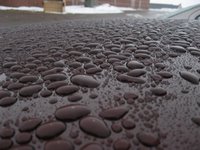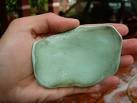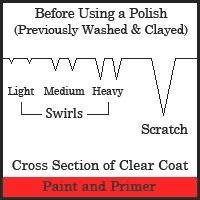I take great pride in my work and it is exceptionally rewarding when a client is blown away by the image of their car. I take the time to stay up-to-date on the latest products, proper detailing methods and techniques, and tools to make your car its best. I am not brand loyal to any one product; I use products from all over the world that deliver the best results. While these products may be the best in the industry, knowing how to use them properly is crucial. I continue to learn from some of the finest detailers in the world and attend group get-together’s to discuss and test out products.
People often ask me to describe how I create the prefect look of a car’s paint finish in terms they can understand. The best way to compare the process is to think about the Zamboni machine at the ice rink. The Zamboni, polishes and removes imperfections as it resurfaces the ice making it smooth again and glow like new.

Wash and Dry
The main reason for poor car appearance and paint defects (swirls, spiderwebs, scratches) is improper washing and drying. One of my goals is to educate my clients on proper car washing methods so that the work you paid me to do to last longer, in addition to protecting and maintaining your car’s finish.
I use microfiber wash mitts which greatly minimize scratching the paint. By employing a wash and rise bucket technique, the dirty water is not spread over and ground into the paint surface. I use high quality, microfiber drying towels that soak up any remaining water and greatly reduce marring the paint. I use high quality Ph balanced, high lubricity, and heavy suds washing soaps to ensure the wax/sealants are not removed during the wash and that the wash mitt has the ability to glide over, rather than dig into, the paint.
Claying
One of the first techniques I use is called claying the car. This clay material is used to clean the paint surface and remove embedded containments. Once the surface is clean of debris, proper polishing can be done. If, after a car washing, you run you hand over the paint surface and it feels “grainy”, “rough” or your hand does not easily slide on the surface, you have debris on the paint surface. For the ideal test take a plastic sandwich bag, put your hand in it and gently move it around the clean paint surface. If it feels grabby you need a claying and polishing done. If the debris is not removed before applying a polishing, you are just swirling around the debris onto the paint surface.
Sometimes the embedded materials need to be chemically removed, this is a process left for the professional. Having the science background that I do, this job will be preformed properly. On white cars iron rail dust will leave orange spots on the paint, typically on the lower half of the car. Claying will remove some of the material, but not all. If left alone these orange spot will serve as starting points for rust which will cancer under the paint, once that happens only a total repaint is the fix.
Buffing
The term buffing, which is often misunderstood, means to use an aggressive compound that will remove the paint defects (swirls, spiderwebs, random deep scratches). If this process is used improperly, it will damage the car’s paint. Not all cars need this aggressive approach; I have the experience to determine the best course of correction for the car. I have specialized tools to measure the paint thickness, read below “ensuring the integrity of the paint”. Untrained detailers will leave buffer trails, deep marring and remove layers of paint during this process.
Polishing

If your car is polished aggressively, that work needs to be followed up with additional polishing’s of less aggressive polishes. Remember back to high school shop class where you use a coarse sand paper then reduce the coarseness of the paper to create a smoother and finer finish? Paint surfaces act the same way.
The true gloss, reflection and depth of color of a cars finish come from the polishing of the surface, NOT the wax/sealant you use. The wax/sealant is nothing more than the “makeup” for the car. I can use an $1800/oz wax on your car, and unless the surface is polished you won’t see the difference.
Leather cleaning and conditioning
Leather interior is a wonderful addition to a car, and it needs to be treated differently than fabric or vinyl. Leather comes in different qualities and many are coated to reduce the likelihood of absorption of fluids. The type and quality of your leather will determine how I treat it. Leather needs to be cleaned and conditioned often to retain its supple texture, flexibility, and color. I have a variety of cleaners and conditioners and with my experience I can help make the leather last for much longer. On open grain leathers (non-coated) I use the world’s finest product, Leatherique®, it will make a dramatic change to neglected or damaged leather. Got blue jean dye transfers, many times we can totally remove them.
Ensuring the integrity of the paint
Unlike many detailers, I take the time to measure the thickness of your car’s paint to determine its integrity. Using a paint gauge allows me to know how much paint surface is there to work with. This tool is needed for heavy removal of paint defects when I have to resurface the paint. Removing too much surface can jeopardize the UV protection of the paint, and lead to premature paint failure. You may have seen this on cars where large areas of paint are discolored, peeling away, or a milky color.



